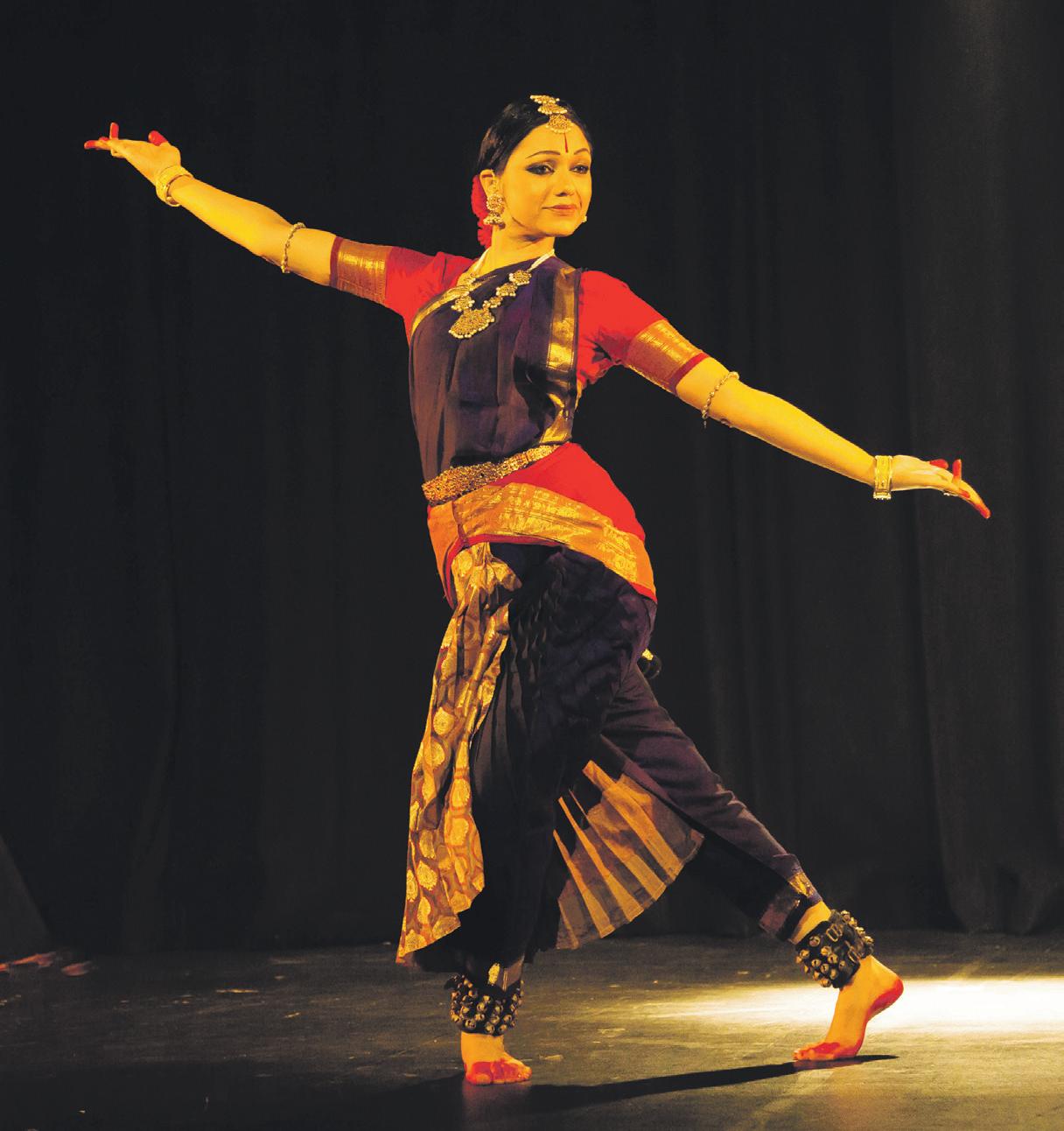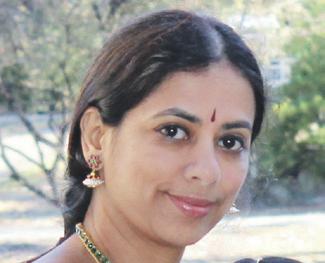
4 minute read
A four-pronged convergence
from 2013-07 Sydney (2)
by Indian Link
Profound expression, elegance, energy and entertainment: Soorya Australia’s annual festival is a winner all the way through
BY AmsA Venk At
Four very special artistes from India were welcomed to Sydney this month by Soorya Australia, in their annual Soorya Festival of Dance and Music.
Each of them leading lights in their own field, their performance at the Baha’i Centre in early July, warmed the hearts of Sydney audiences on a cold winter night.
Sunanda Nair (Mohiniyattam) impressed with her stunning expressions; Rama Vaidyanathan (Bharathanatyam) with her statuesque elegance; Rani Khanam (Kathak) with her scintillating energy, and Prahlad Acharya (shadow play) with his spectacular entertainment.


Tales from the Ramayana

Sunanda Nair started the show with the famous Swathi Thirunal piece Bhavayami Raghuramam in the Mohiniyattam style. Her training in both the Kathakali and Mohiniyattam style came through in her intense emoting of the various incidents of the Ramayana. Be it the arrogance of Ravana as he tries his hand at lifting the Shiva Dhanush, or the anger of Parasurama, the shifty greedy eyes of Soorpanakha as they feast on Rama, the smirk on Ravana’s face as he watches Lakshmana leave to help Rama, the loyalty of Jatayu as he is hacked to pieces by Ravana, the deep sorrow of Rama as he sees the chariot wheel marks that carried Seetha away, the subtle change in expression as Seetha observes the hesitation in Rama’s face in accepting her after the war - the epic was brought to life in all its grandeur. There was some humour as Soorpanakha scorns
Seetha’s slim form in contrast to her robust self, and one enjoyed the intricate details in choreography where Seetha removes her bangles and anklets as she approaches the golden deer so as not to frighten the animal away. The piece stood out as an intricately carved doorway leading to a world of imagination.
The navarasa experience
If Sunanda took the audience on an emotional roller coaster ride, Rama Vaidyanathan enchanted the audience with her mystic beauty and grace. Rama’s segment began sparking off a magic of music and movement. As the piece de resistance, Rama chose to represent the navarasas through the varied reactions of the people gathered to watch as Krishna enters the wrestling arena in Khamsa’s court. At the sight of Krishna the wrestlers burned with red hot anger; the common people gazed with wonder; the young women’s hearts throbbed with love; the young boys laughed in camaraderie; the kings trembled with fear having met their nemesis; the parents’ hearts swelled with compassion for the helpless boy; Khamsa sauntered with bravado and valour; the ignorant breathed contempt, and the realised souls were elevated with a sense of peace.
Subtlety and style marked Rama’s performance as she explored the navarasas, be it the nudging maidens who stared at Krishna without even blinking lest they lose sight of him, or the nostalgia of the friends in the wrestling arena as they thought of fond times in the past, playing with him, the parents feeding him delicacies and to cap it all Krishna’s reaction ranging from indulgence to all pervading omniscience.
A stillness enveloped the audience as Rama expressed the Shantha Rasa, swaying gently to show the harmonious movement of the atman with the paramatman. The supreme splendour of the Lord was brought to light in the poignant posture of recline as Krishna rested after the ordeal.
The verses from the 10th Canto of the Bhagavatham through Rama’s expression left an indelible impression on the audience.
Rani’s pieces ranged from complex rhythmic footwork to graceful chakars around the stage culminating in soulful expression. A study in contrasts, the first piece on one hand portrayed the Mughal influence on the dance form, where courtesans danced to please the king and on the other hand dealt with Hindu mythology and the ever charming relationship between Krishna and Radha.
A communion with God is the ultimate aim of an artist as they travel the path of music or dance and this was the theme of Rani’s next piece Nisbet : communication with the Almighty through the help of a Guru who leads you to realisation. Set to the lilting and haunting melody of Sufi music, the concept of the formless Almighty and the dancer’s surrender to His glory was evident. His abstract presence was experienced by every member of the audience bridging the distance between man and God.
The audience sat back replete after the dancers concluded with a Tigalbhandhi, bringing to focus the confluence and contrast of styles.
A (big) hand for India!
The unassuming Prahlad Acharya had the audience up and clapping non stop with his brilliantly choreographed shadow play to the evergreen musical piece Mile sur mera tumhara. The theme of ‘Unity in Diversity’ was etched out as Prahlad sculpted with his fingers and hands in quick succession faces of men, women from the different states of India, the varied landscape of the country, different religious houses of prayer - temples, mosques and churches - culminating in the proud flying of the Indian national flag. Thundering applause and a resounding encore for Prahlad echoed through the auditorium bringing the show to a fitting finale.
Words from the masters
When asked what they would like to say to Sydney dance lovers and young upcoming dancers, Rama said, “One has to understand that Dance as an art form is learnt not merely with the sole aim of ascending the stage, it is an art that enriches the being in many ways, teaches many life skills and makes the individual sensitive to his/her environment. When learnt with this multifaceted perspective, one can gain immensely from this art. Also times have changed and the art form no longer lives in isolation; a dancer has to be aware of the world and its happenings. They must read extensively current and past literature and use their art form as a medium to communicate with their audiences”. Rani was of the opinion that “Seeing is Believing”, so dancers should watch the work of great masters to improve their dancing and understand what they should work towards.
Kudos to Soorya Krishnamurthy for bringing these artists together and to Sudhir Das and Sri Das for presenting them to Sydney audiences. The proceeds of the show were donated generously to the Ayyappa Temple of Sydney.









